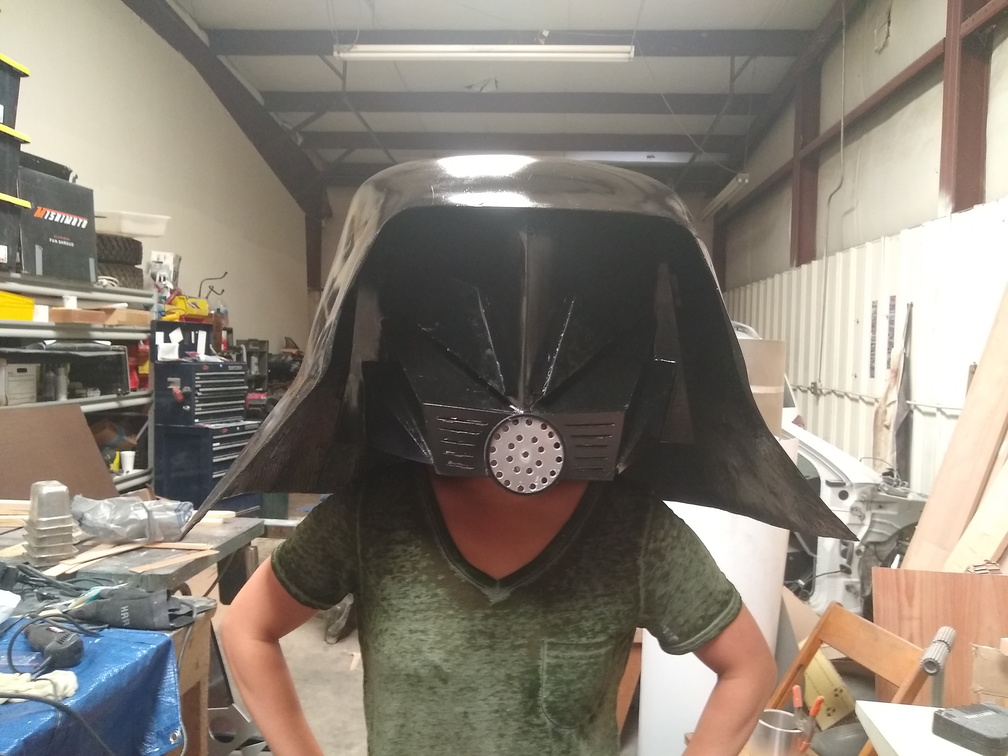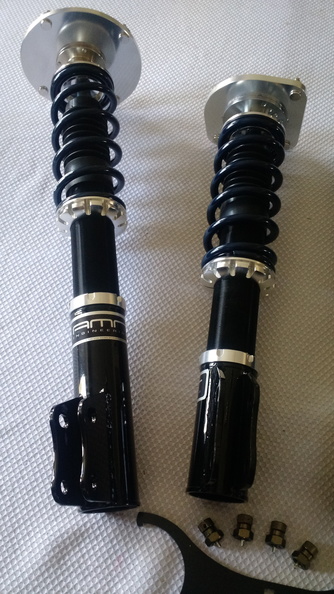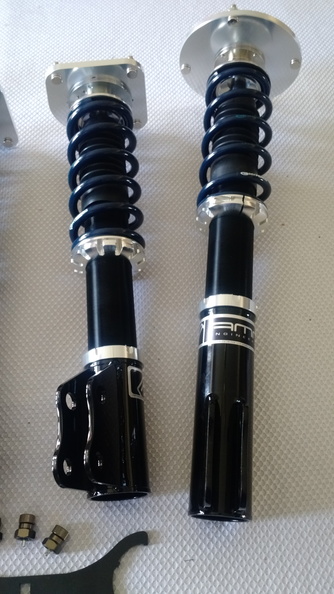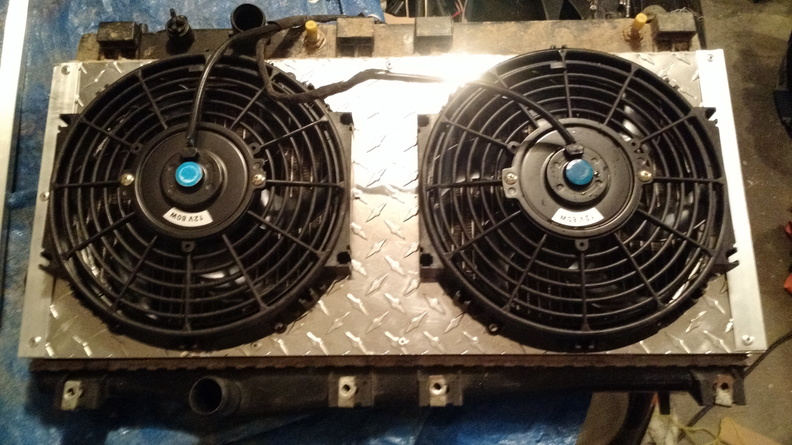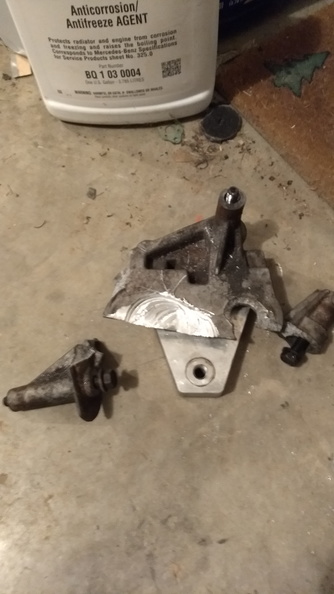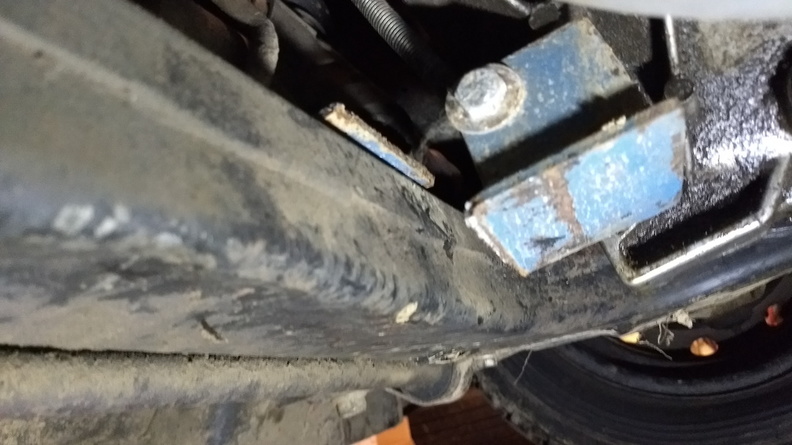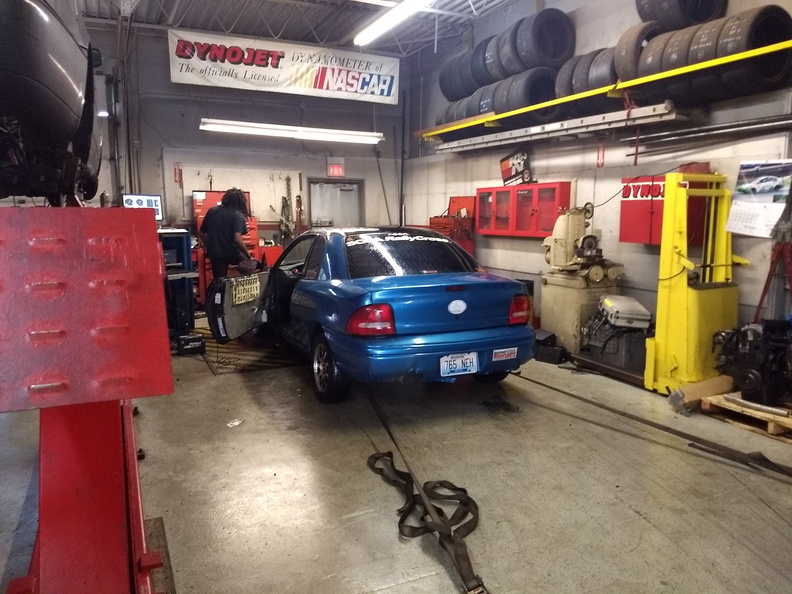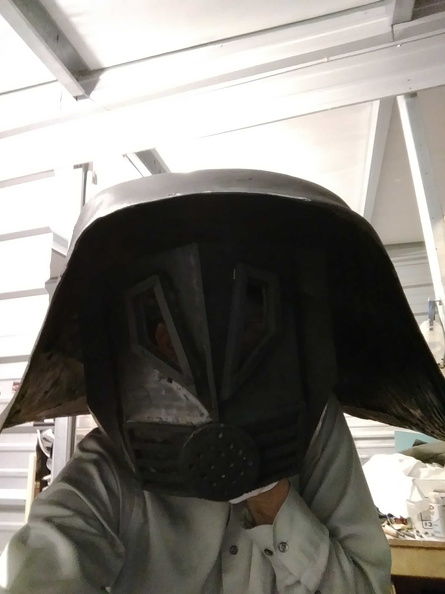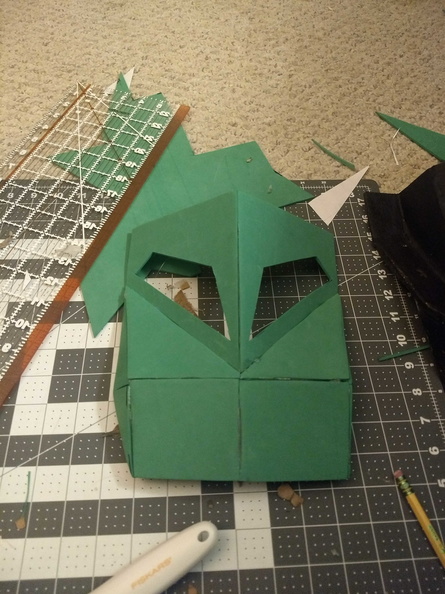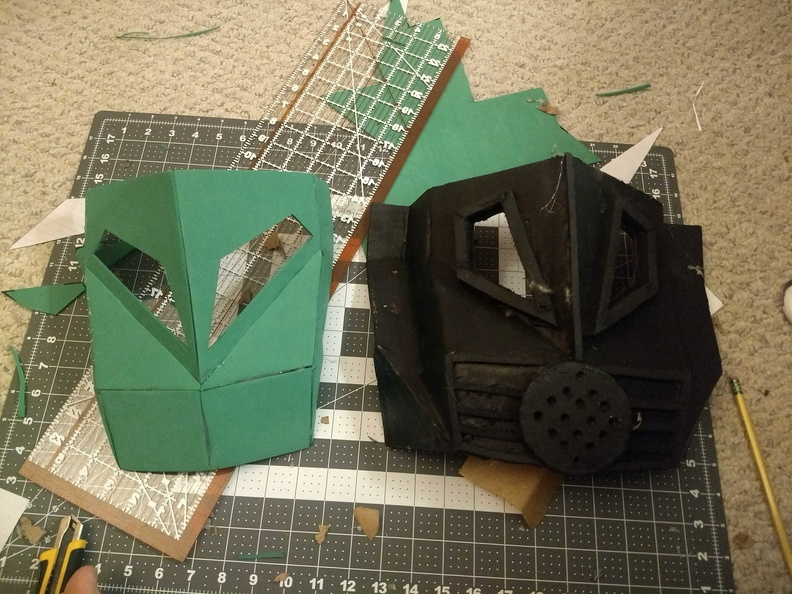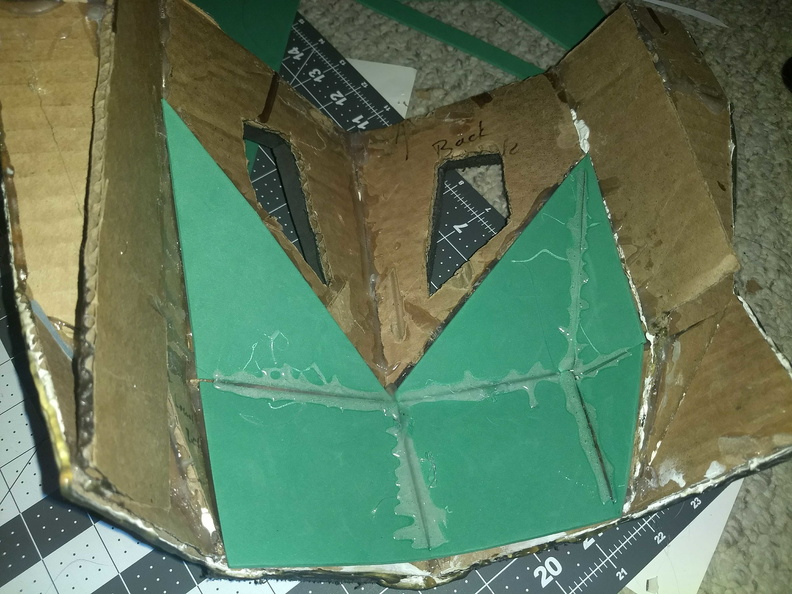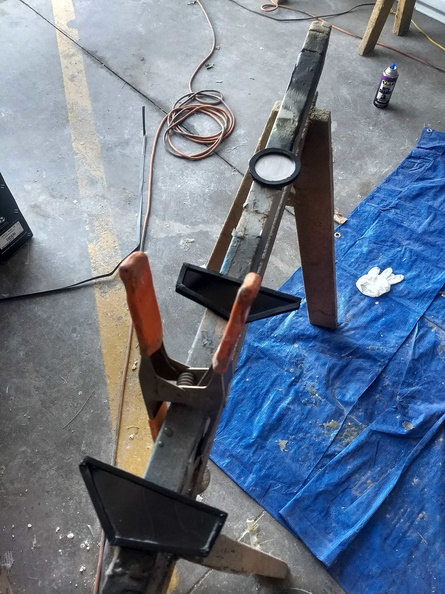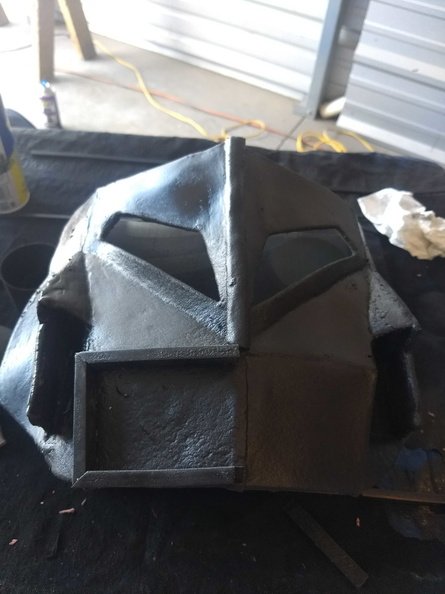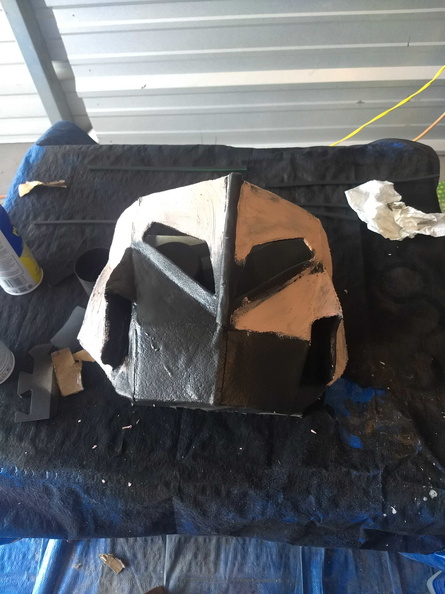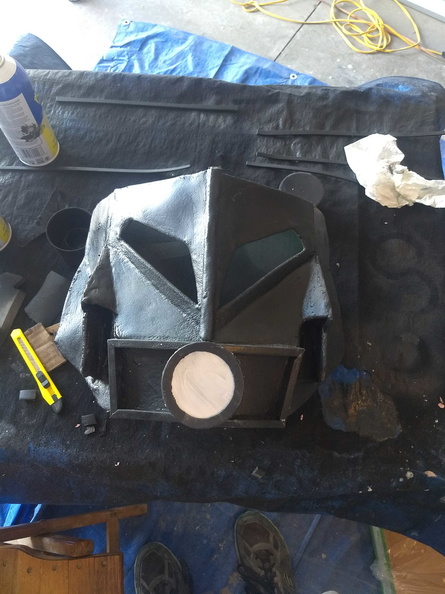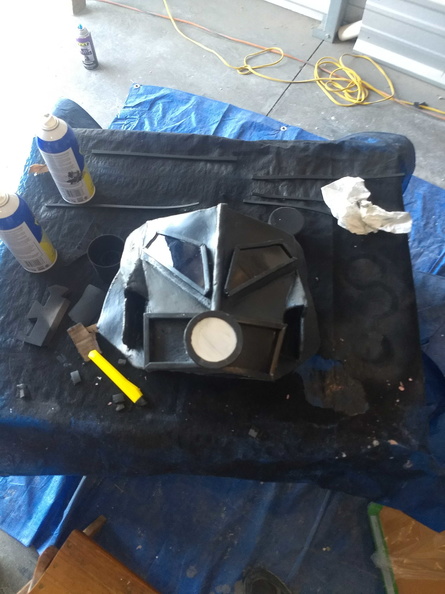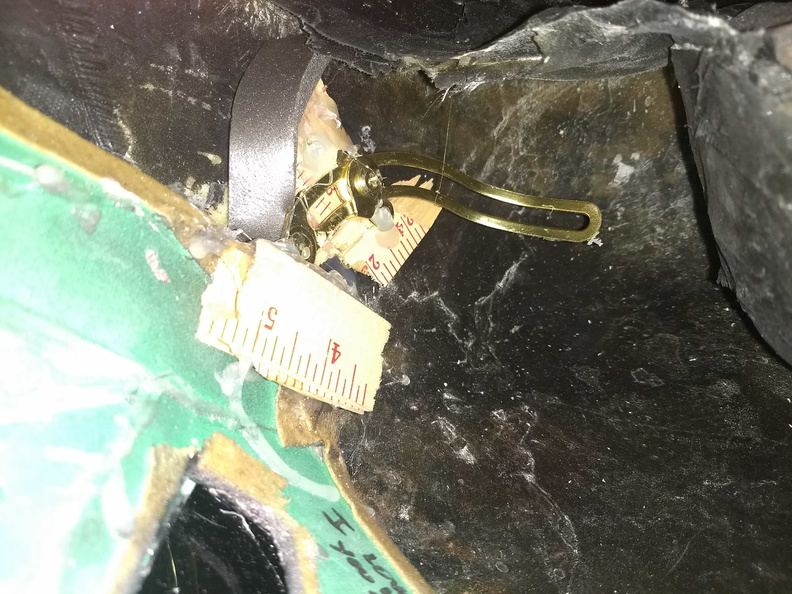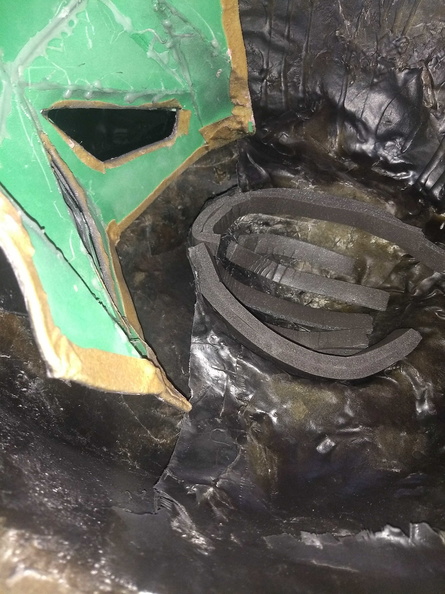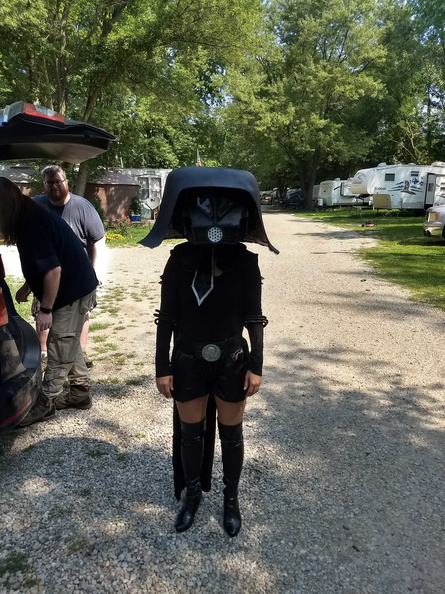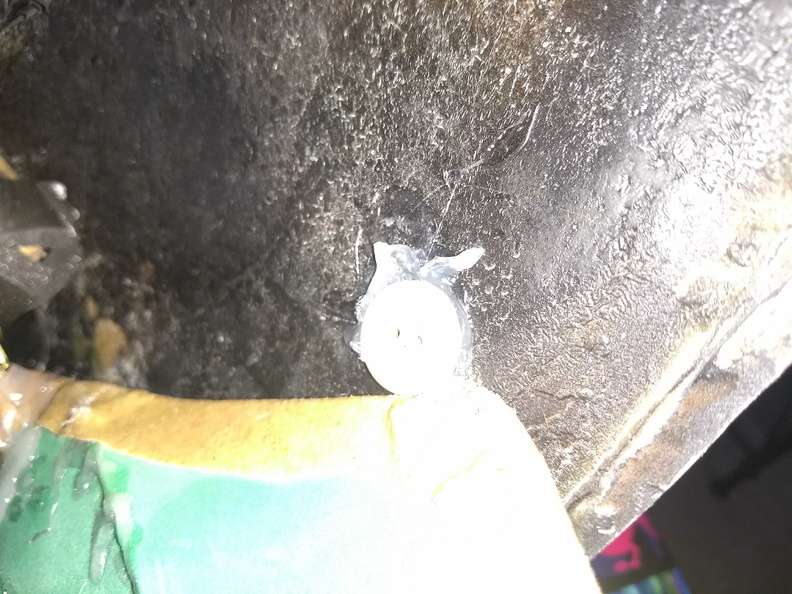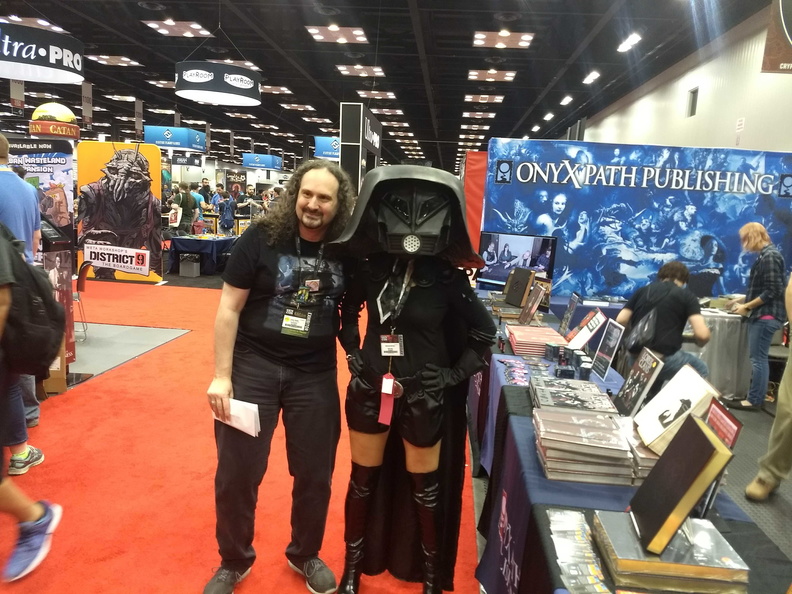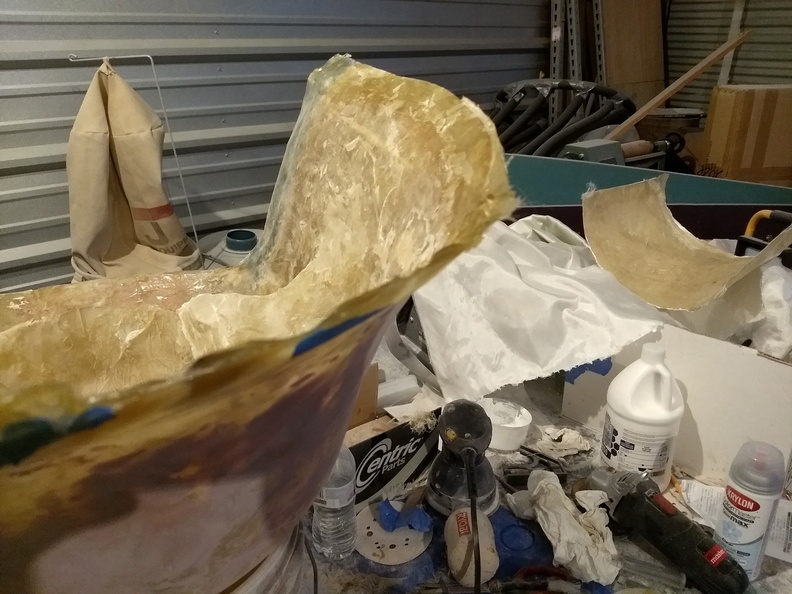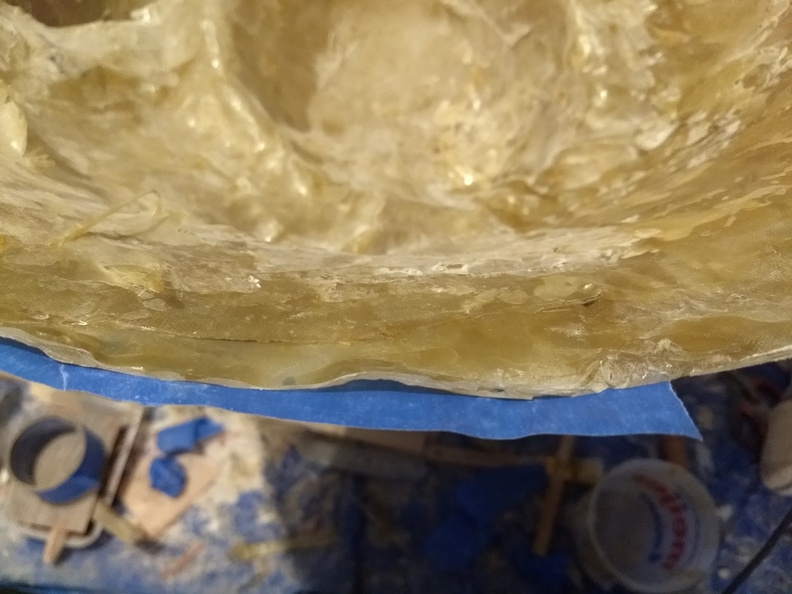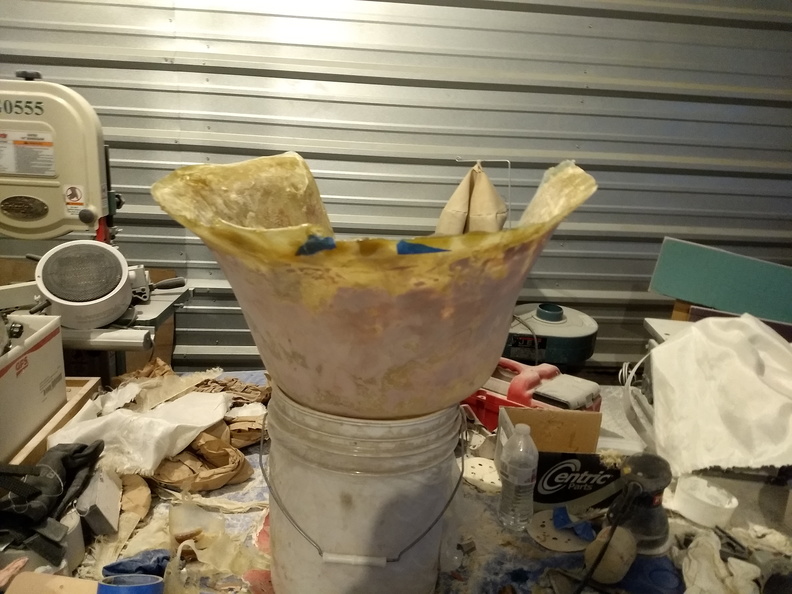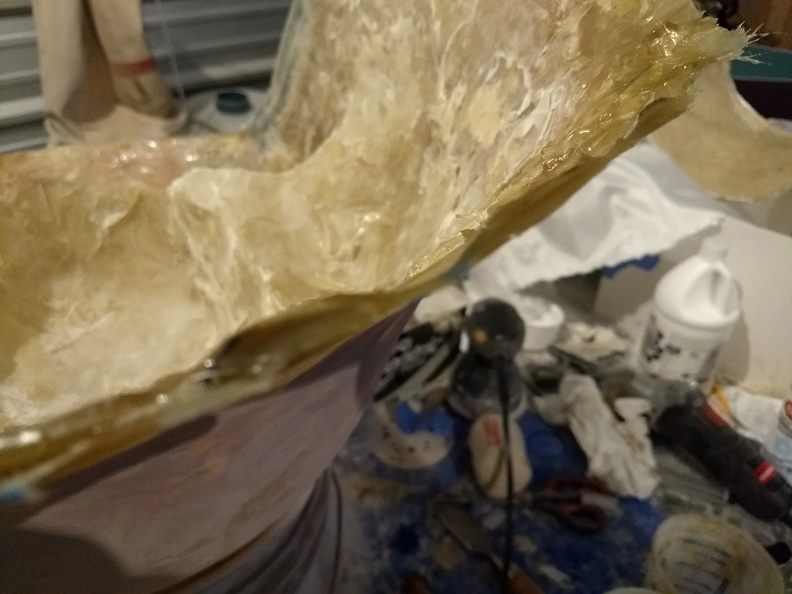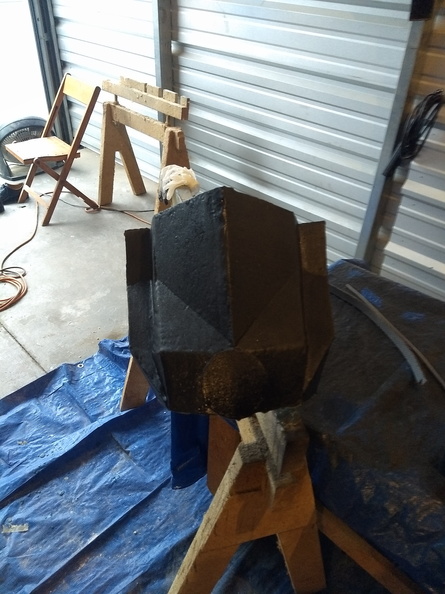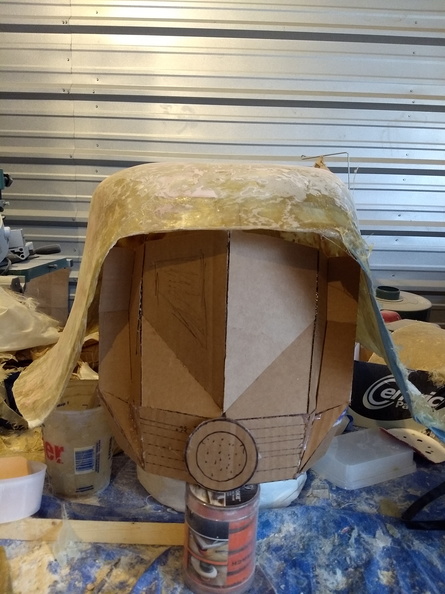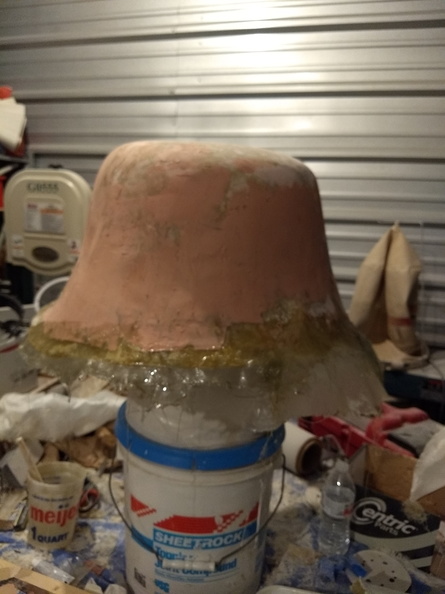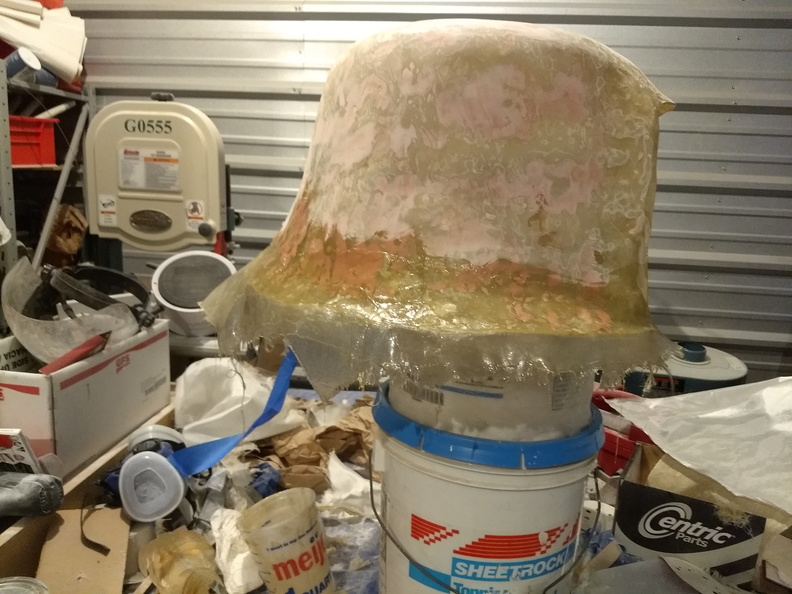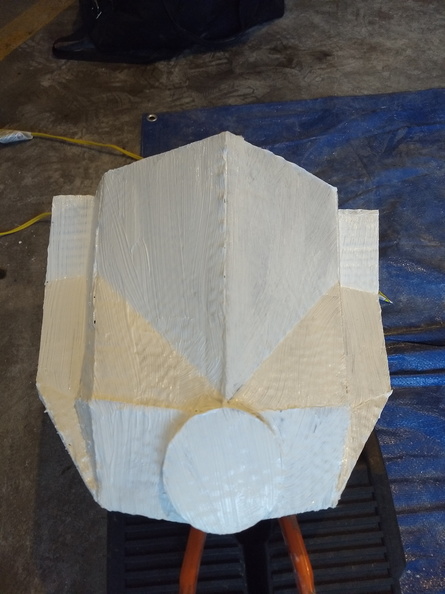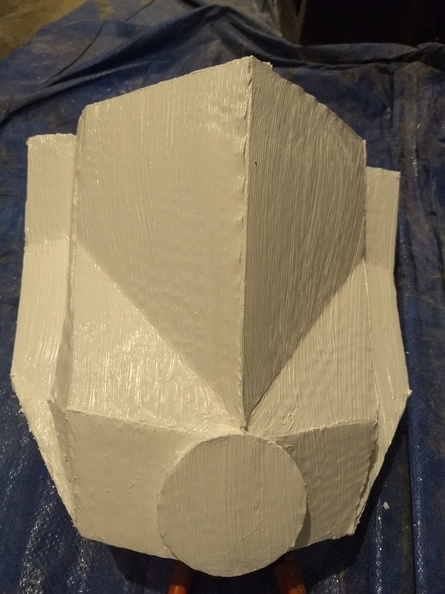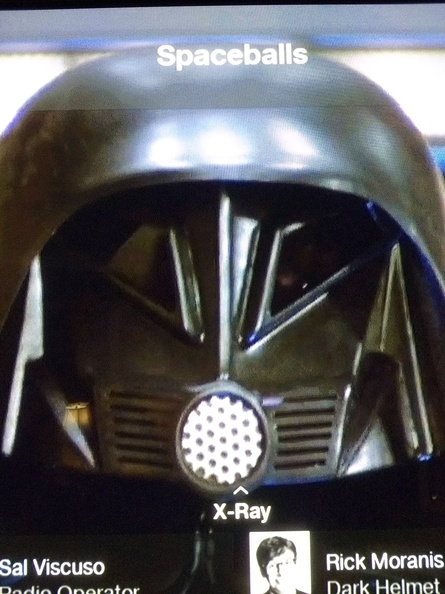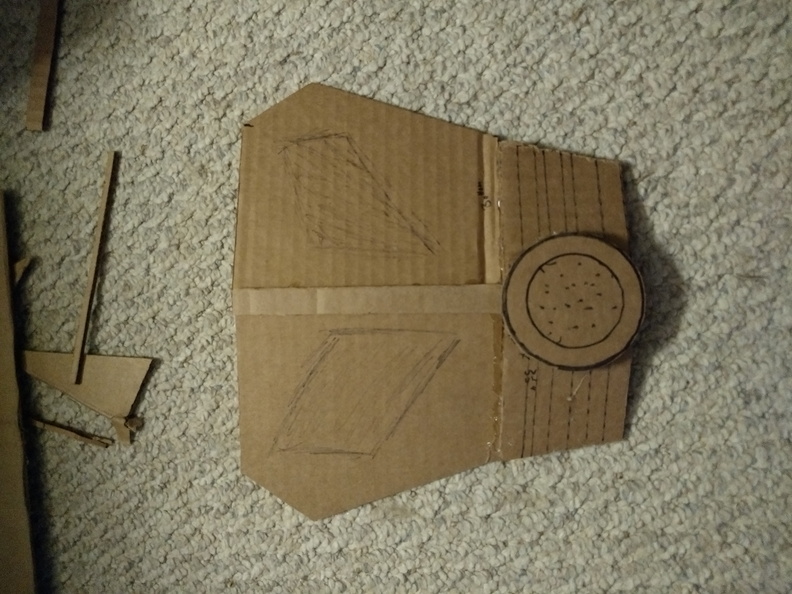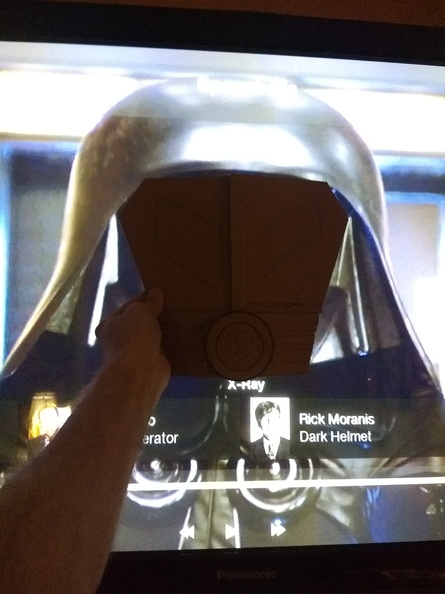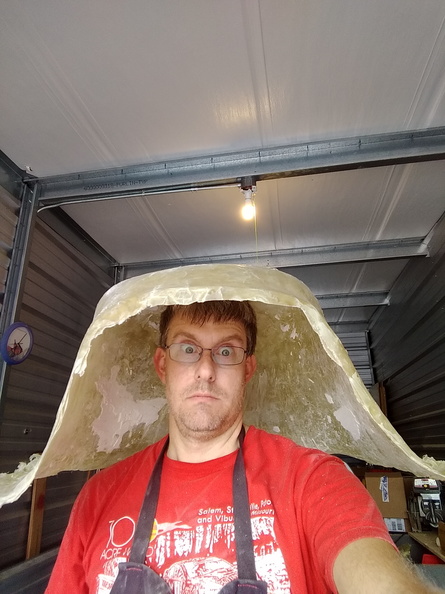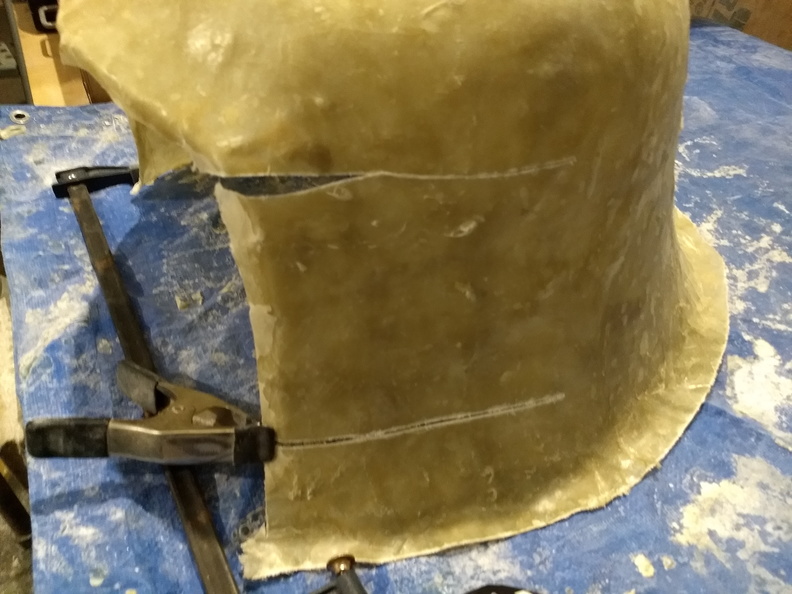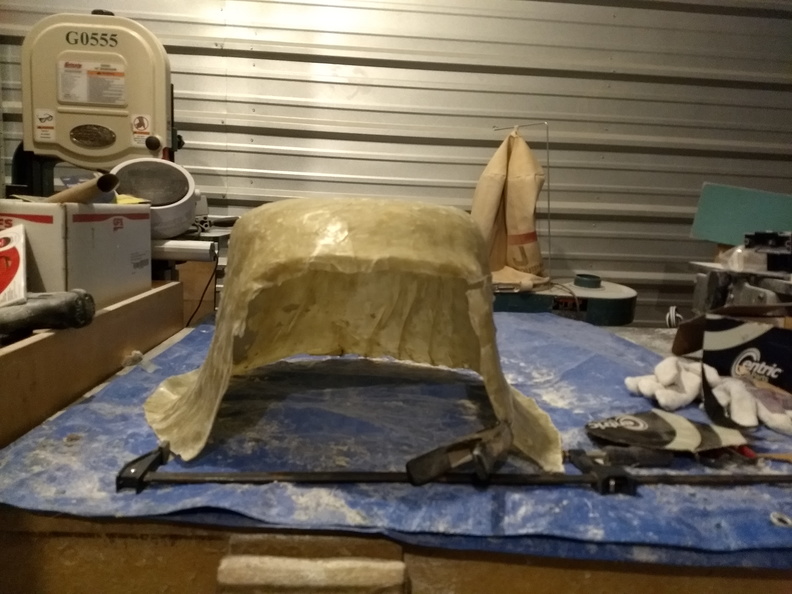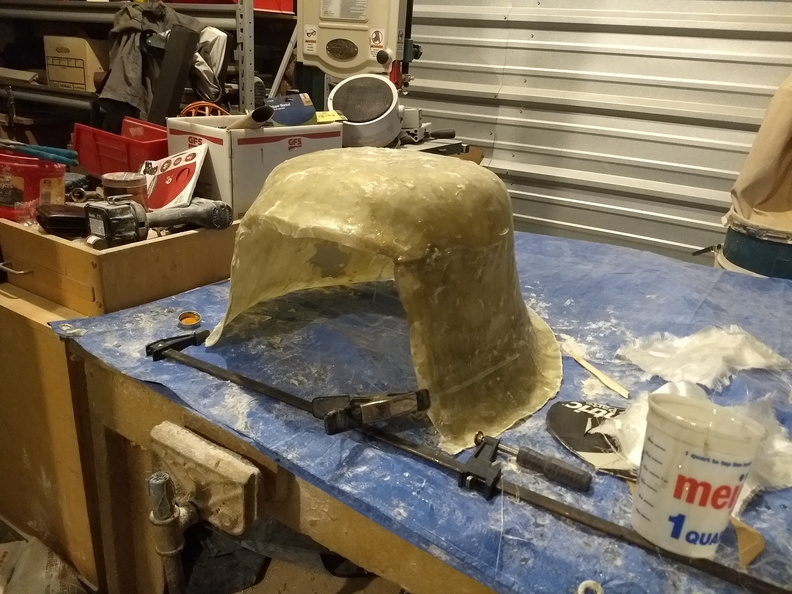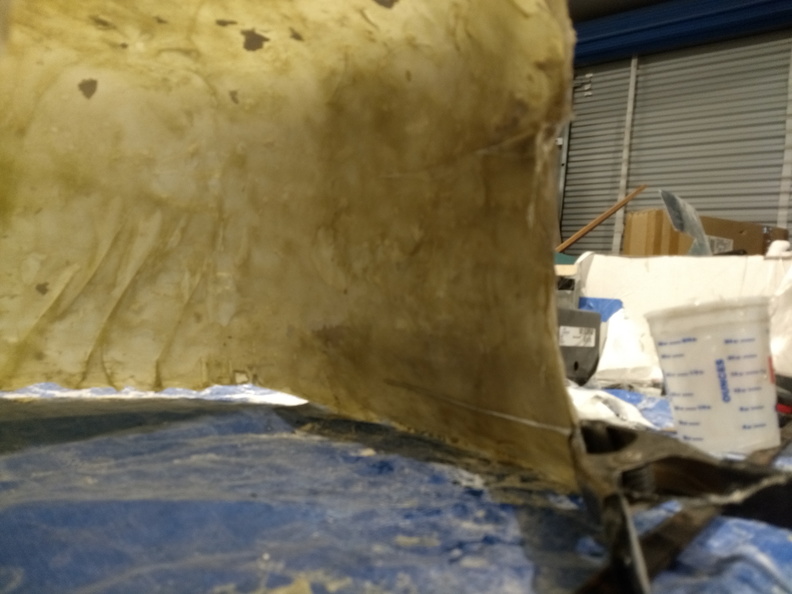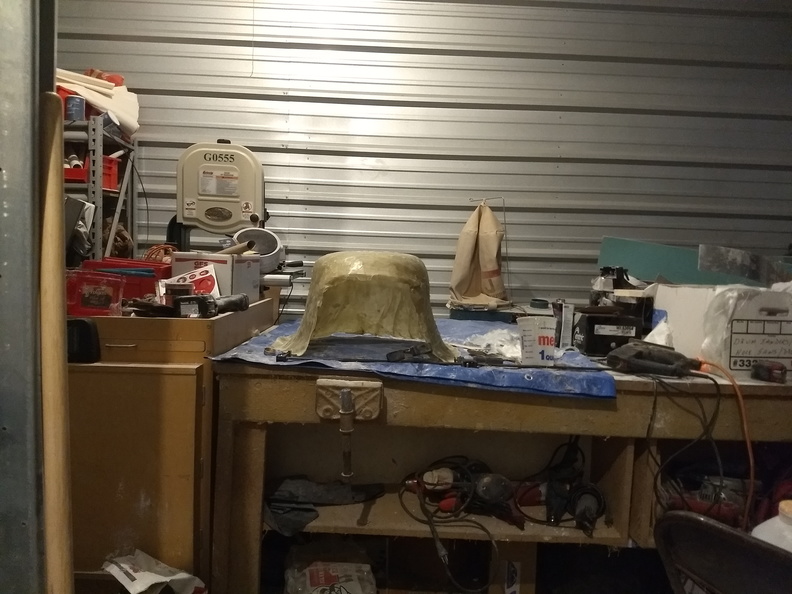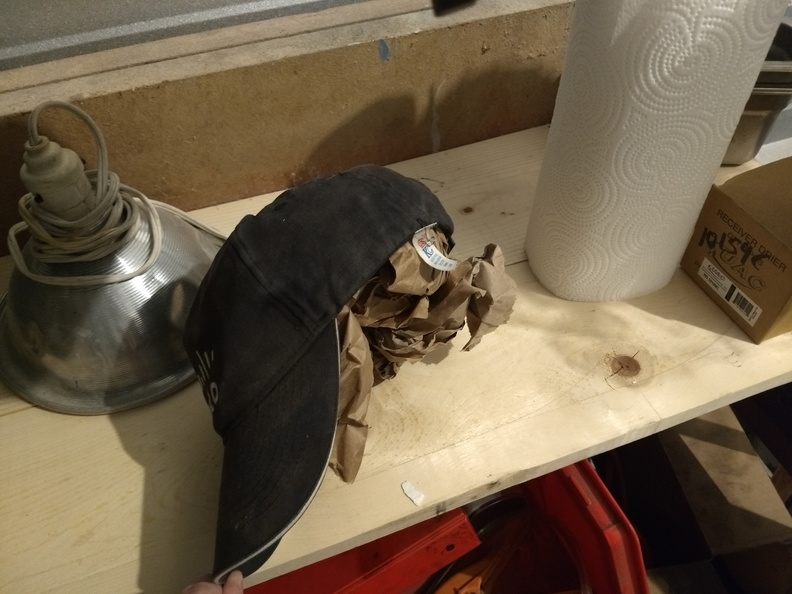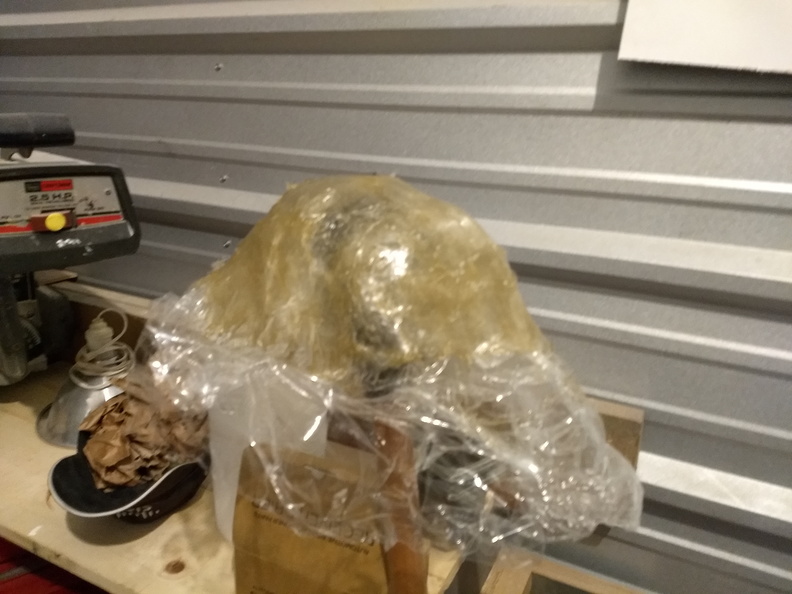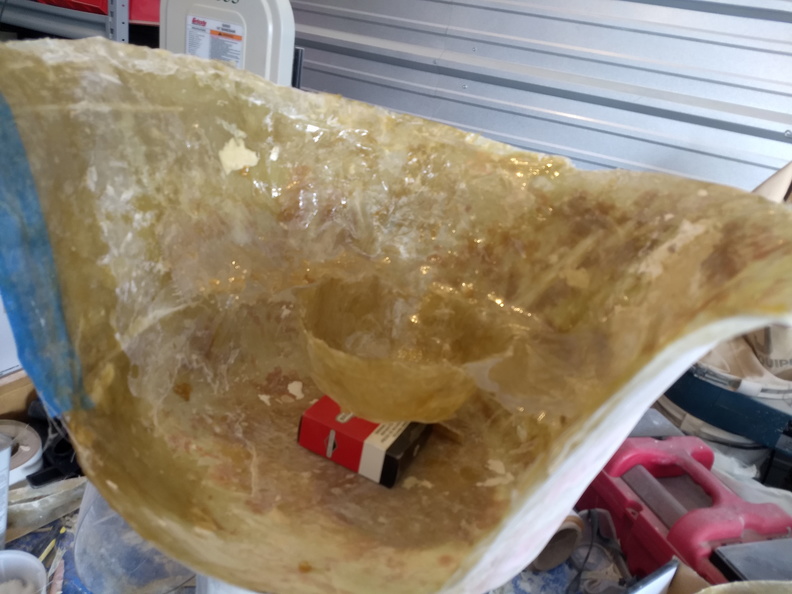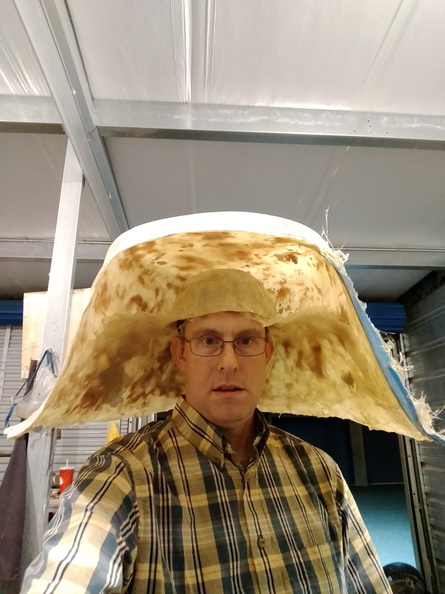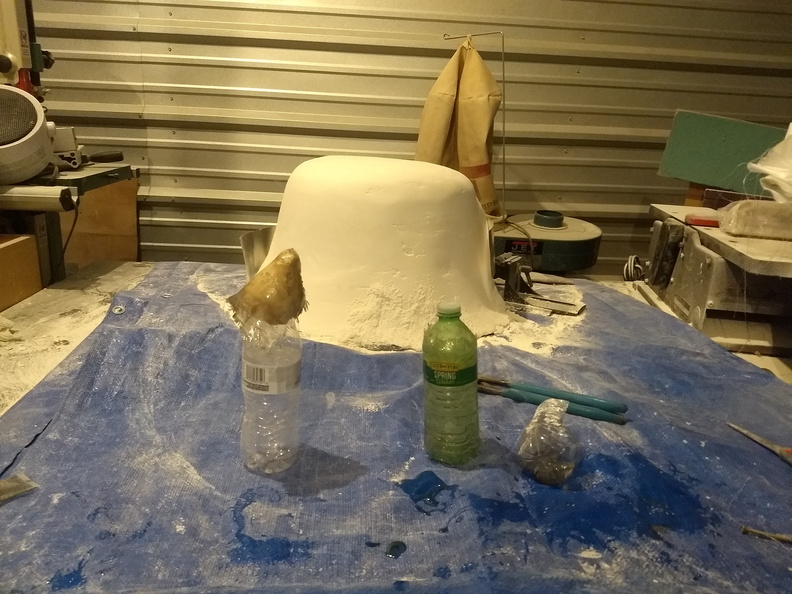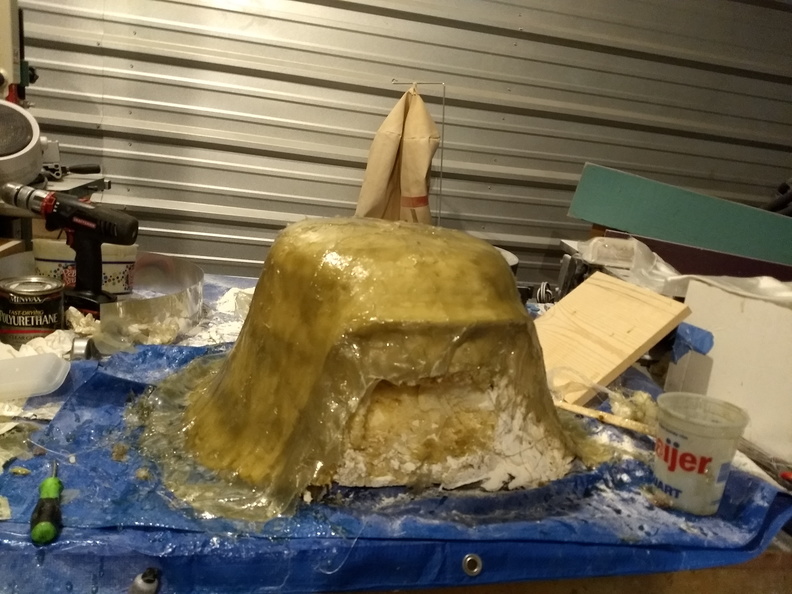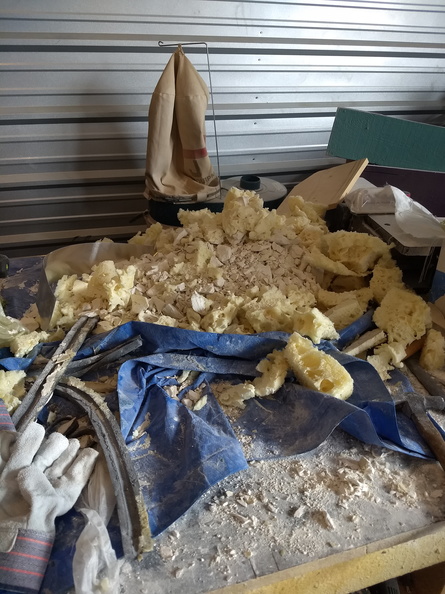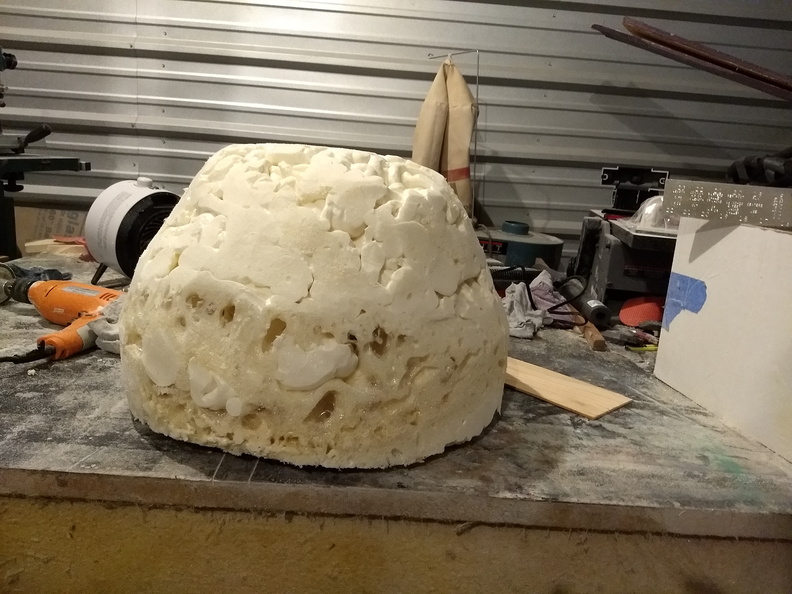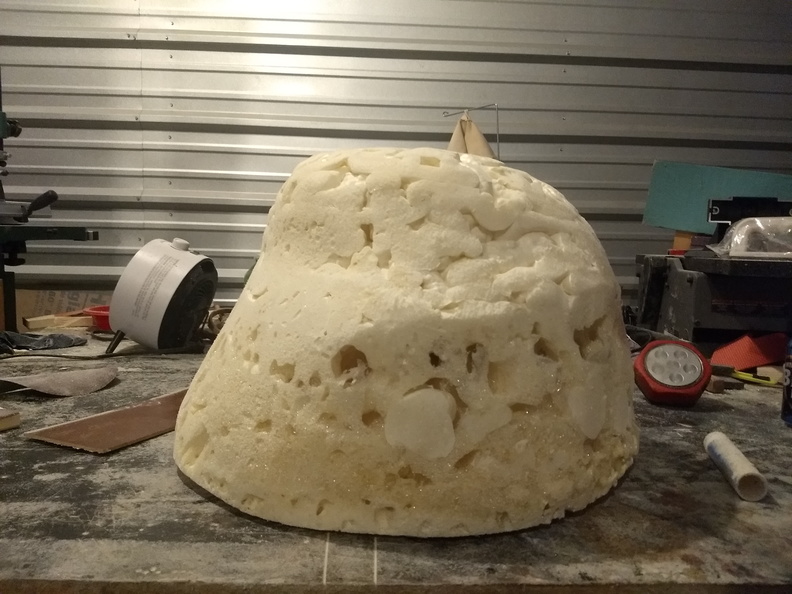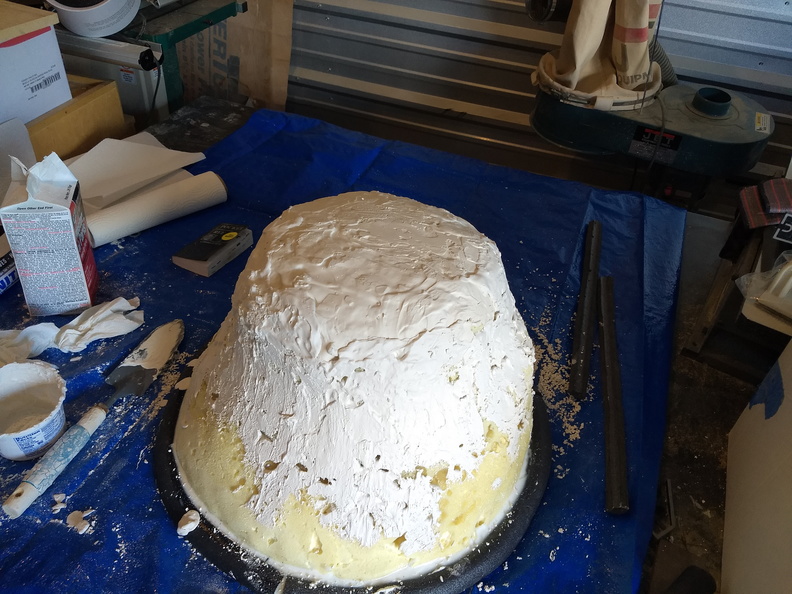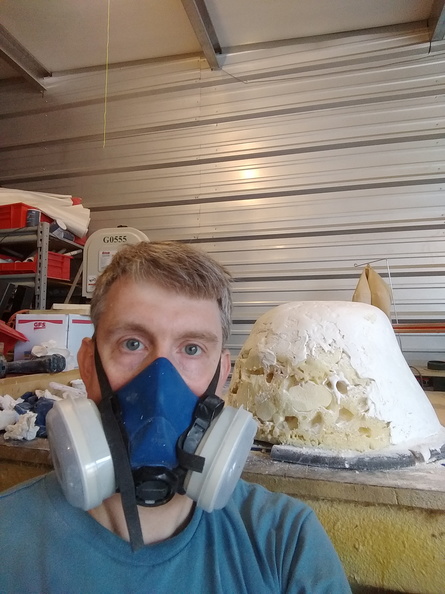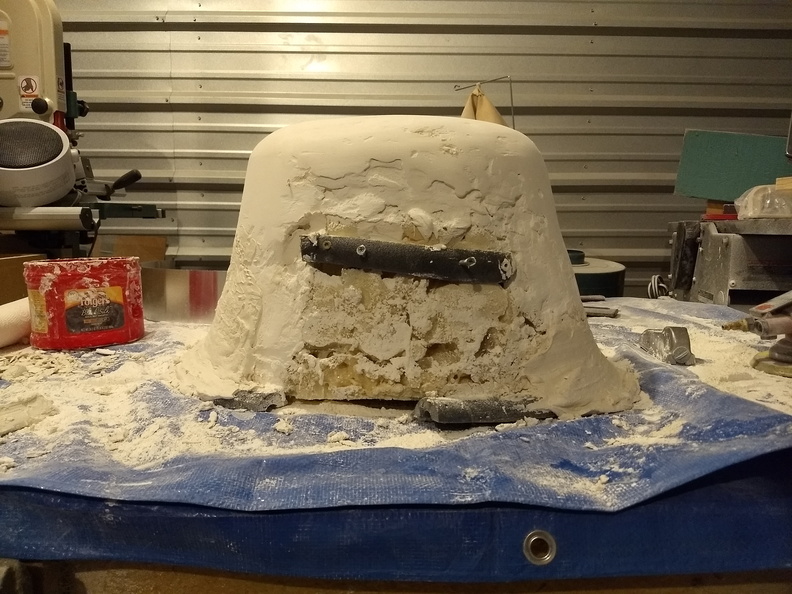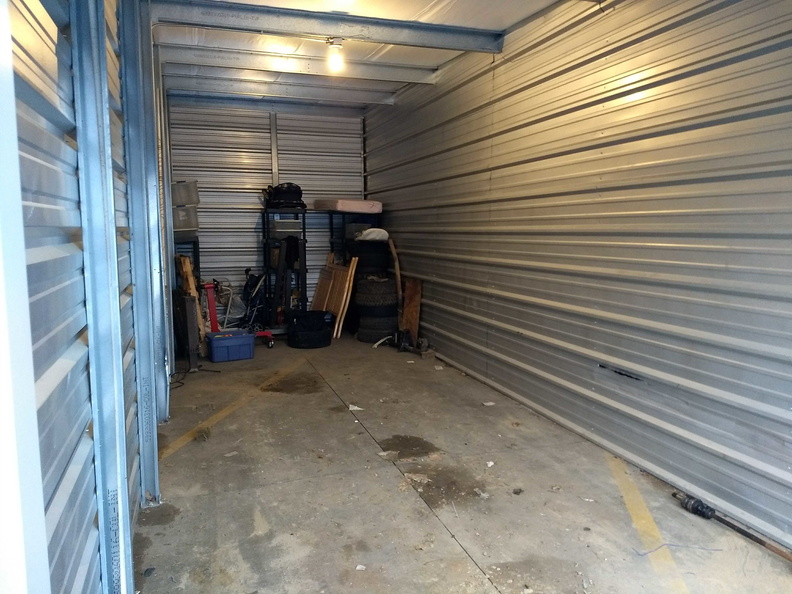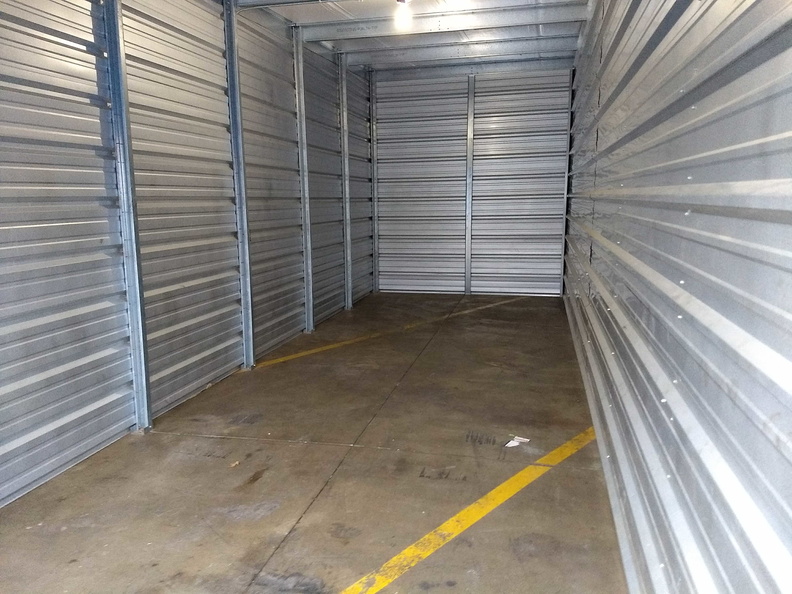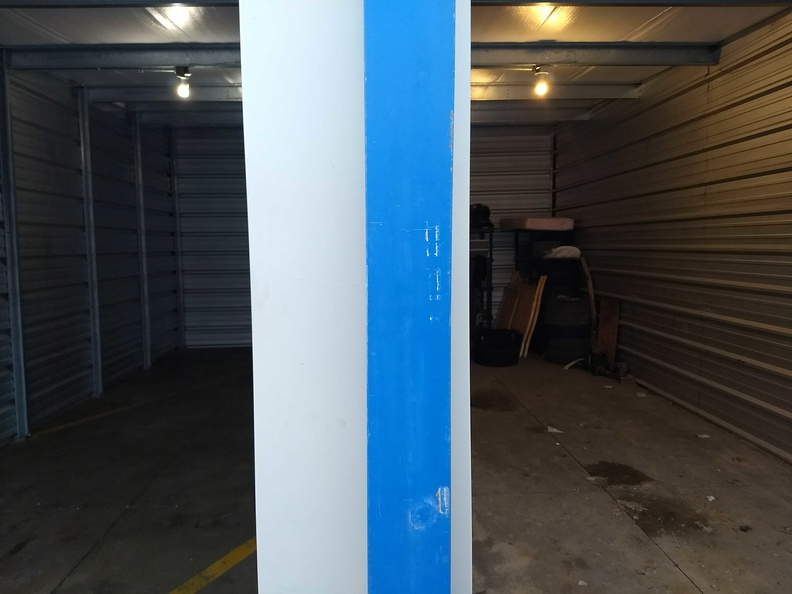Dark Helmet – It’s a little bit better
Long story short… I cut up the fiberglass, reshaped the helmet, re-made the face mask, and a few other things and it’s a little bit better now.
The biggest mistake that I made was the original shaping of the helmet. Perhaps if I were a sculptor I would have had the requisite skill to create a plug that was even and perfect. That is not the case, however, and the helmet was very lopsided. The top of the helmet was just about perfect-ish, but the flare was all wrong. It was too short and it was lopsided. But since it was made out of fibreglass, the solution was pretty simple: Cut it off and make a new one!
I don’t seem to be able to find all of my pictures of that, but basically:
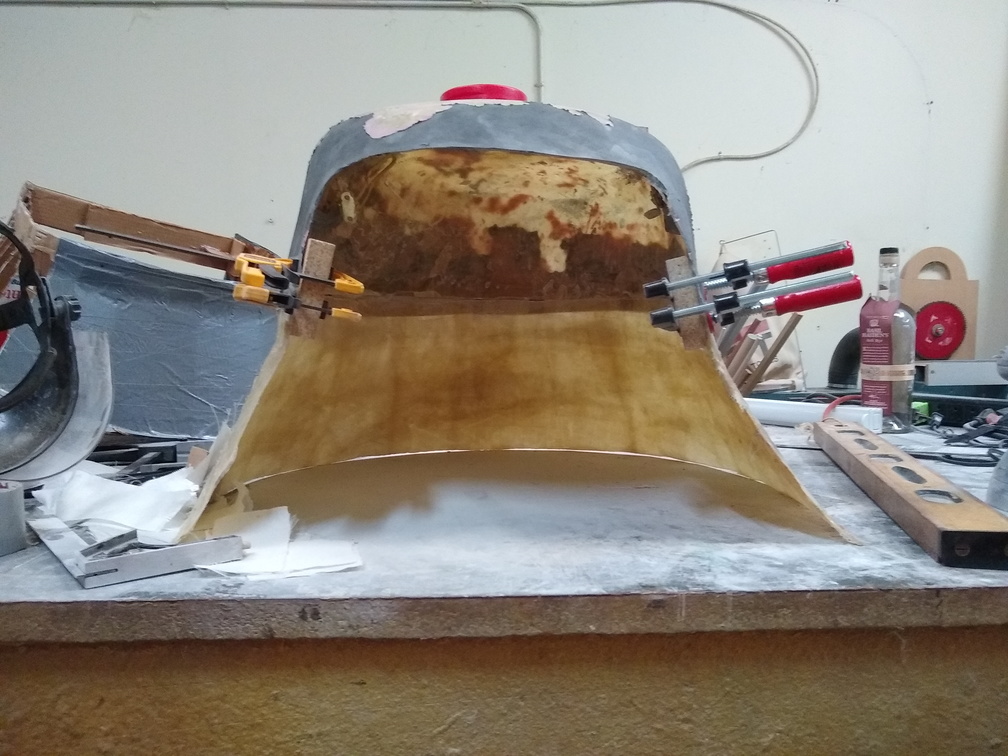
In order to make a good, uniform flare I decided to turn to my old friend, CAD – Cardboard Aided Design. After determining the line that the flare should take, I made a cardboard cut-out that reflected that line. I used that to make a couple dozen more that were all identical. After marking out the exact circle that I needed to follow, I attached those bits of cardboard in that circle and reinforced them. It looked a bit like building a cathedral with flying buttresses but when it was all done, I had a perfectly symmetrical form around which I could create the new flare from fiberglass.
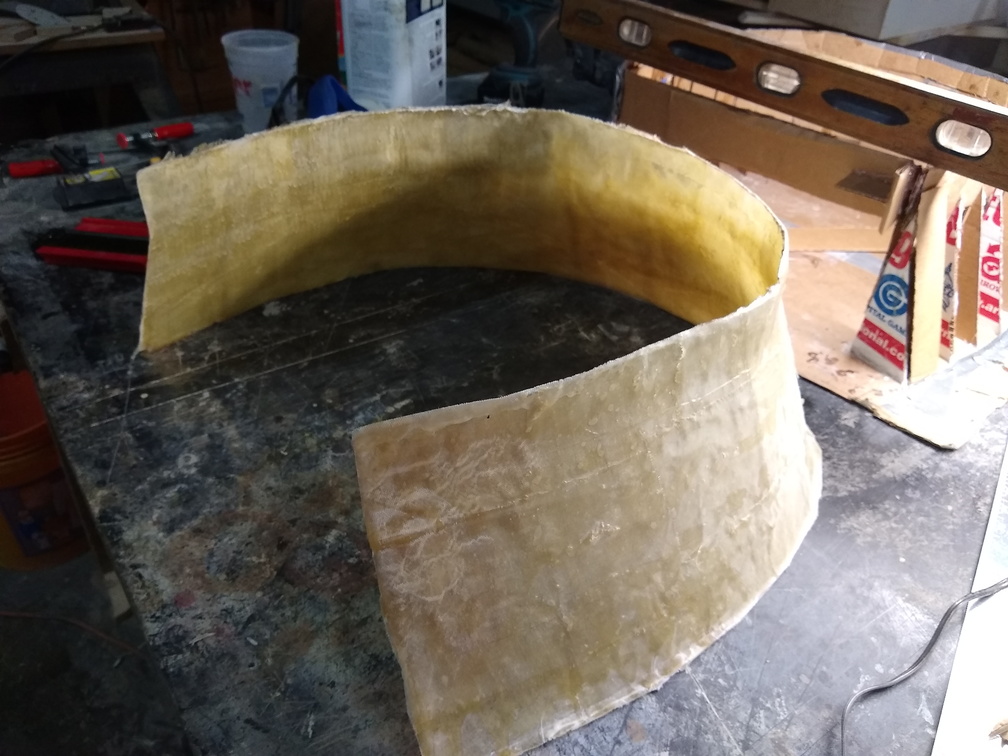
In the background is the cardboard form that I used. Once that new piece was made, I trimmed it up and attached it to the existing helmet. It wasn’t a perfect fit, so some more fiberglass work was needed. To bridge the gaps, I just used a little newspaper to help hold the form while the epoxy dried.
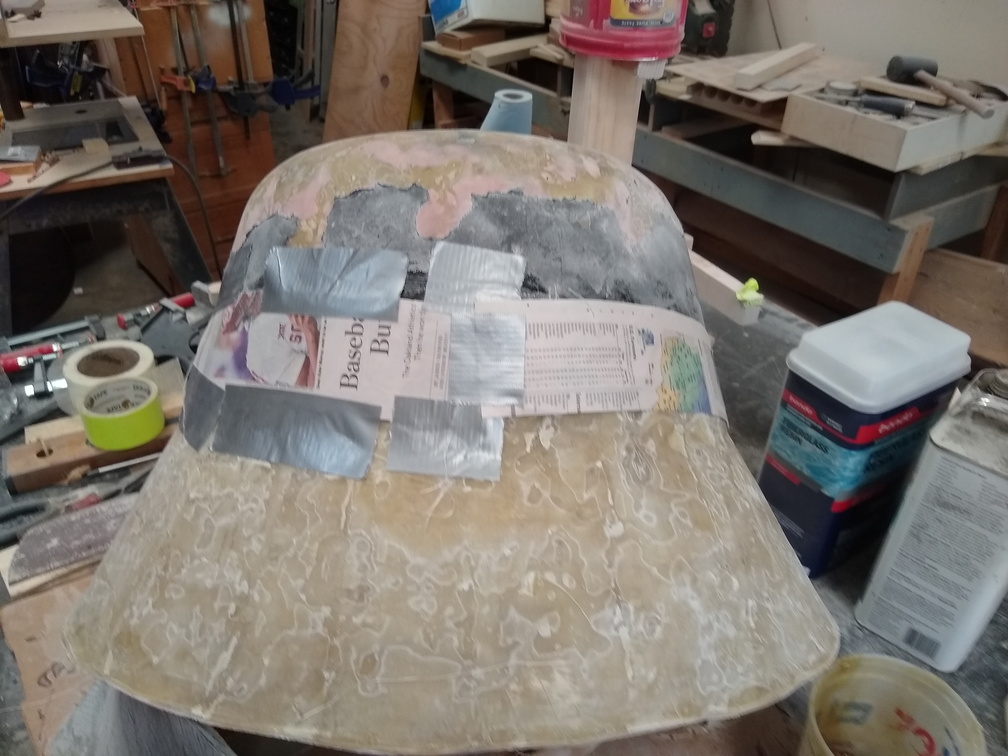
Basically there was a bit of a dip between the top of the helmet and where I needed the flare. The newspaper bridged that gap and the fiberglass went over top of that to bond everything together.
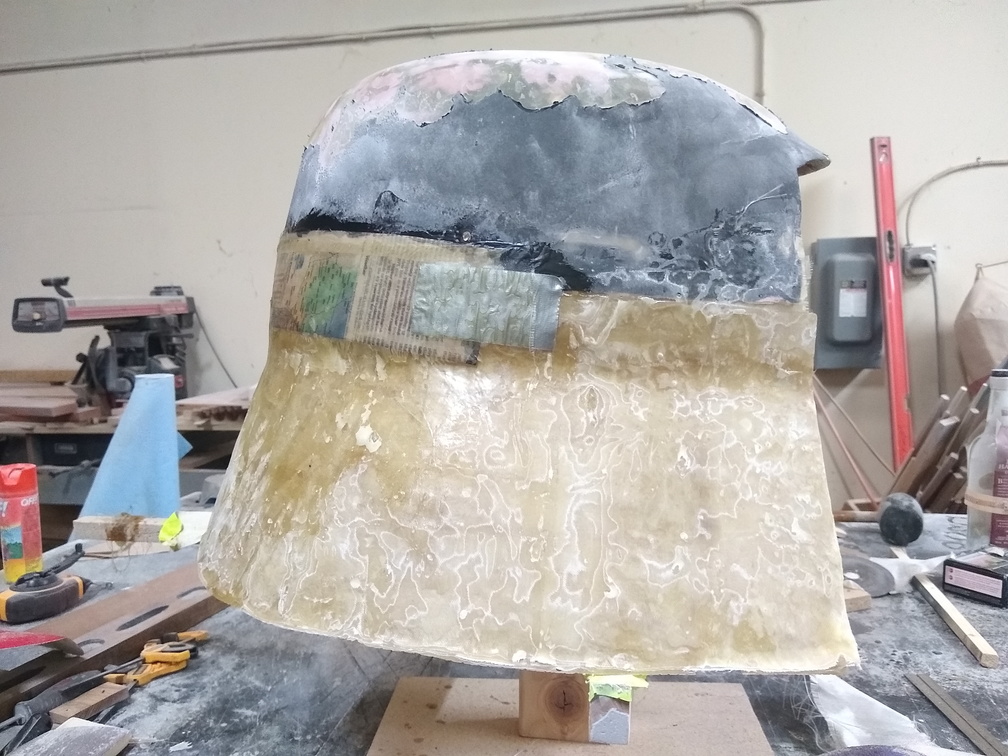
Then some sanding and a little bit of Evercoat to smooth it out.
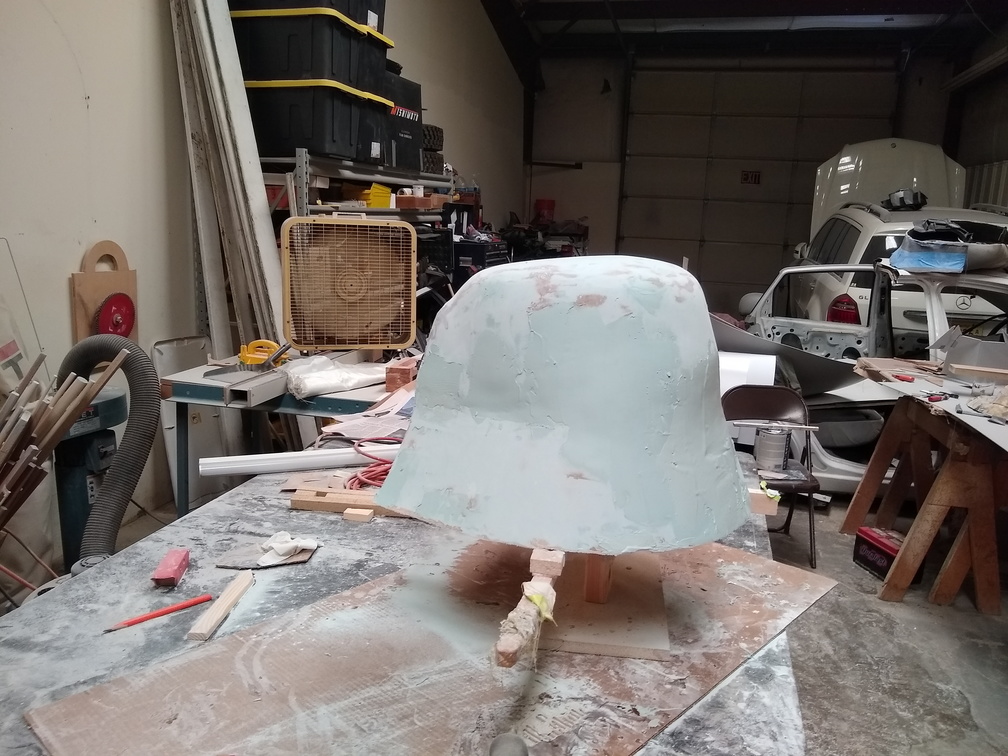
It also got a coat of gloss black instead of the more durable, but not as shiny Plastidip.
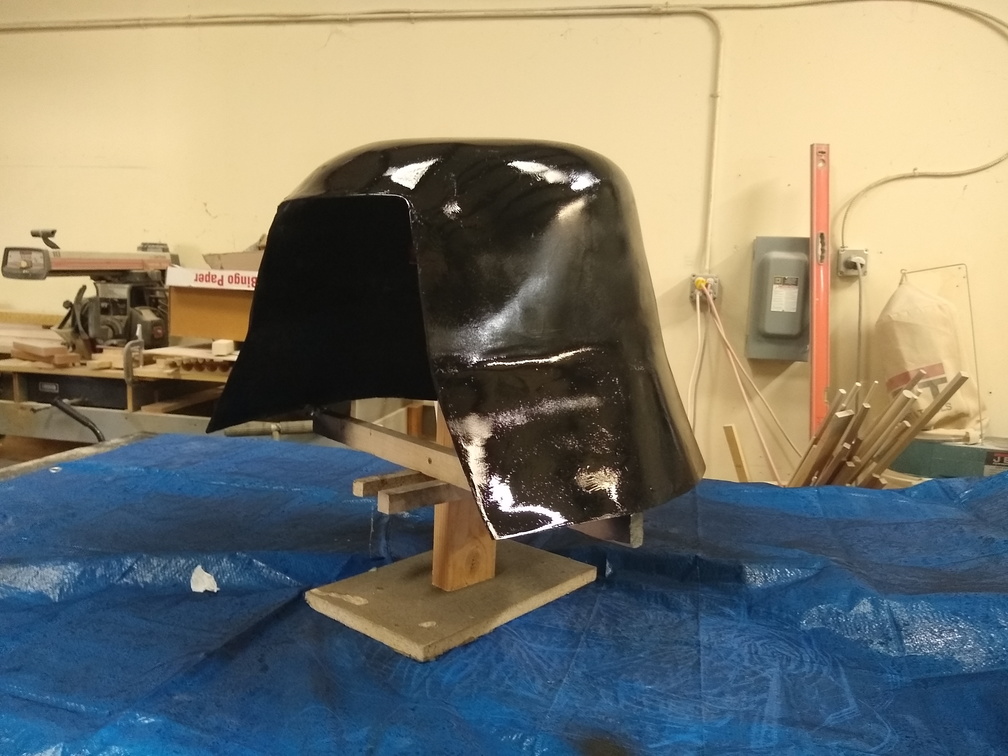
From there, I needed to get the facemask and the head-mounting portions sorted. I started with a new cardboard version of the facemask:
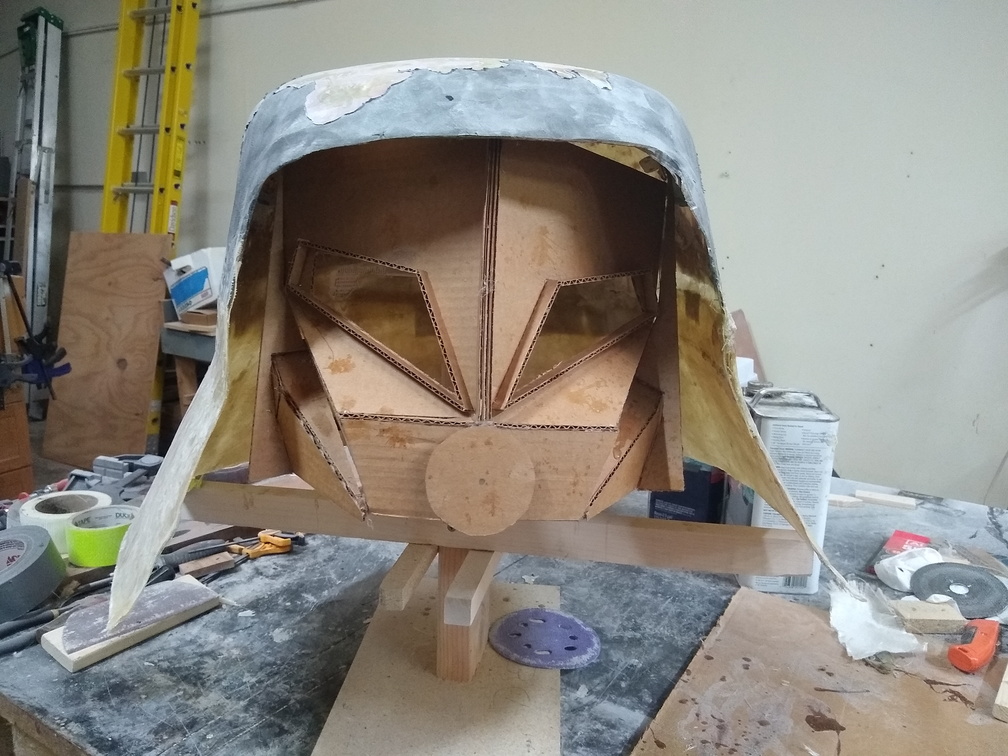
And from there I used some plastic sheeting to form the new mask.
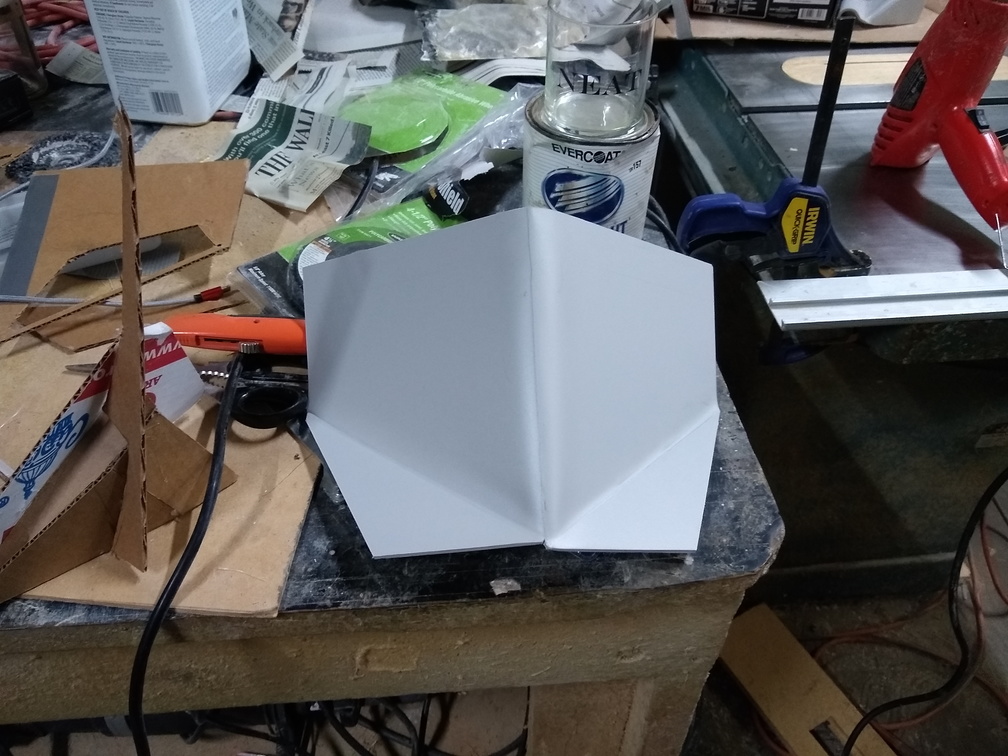
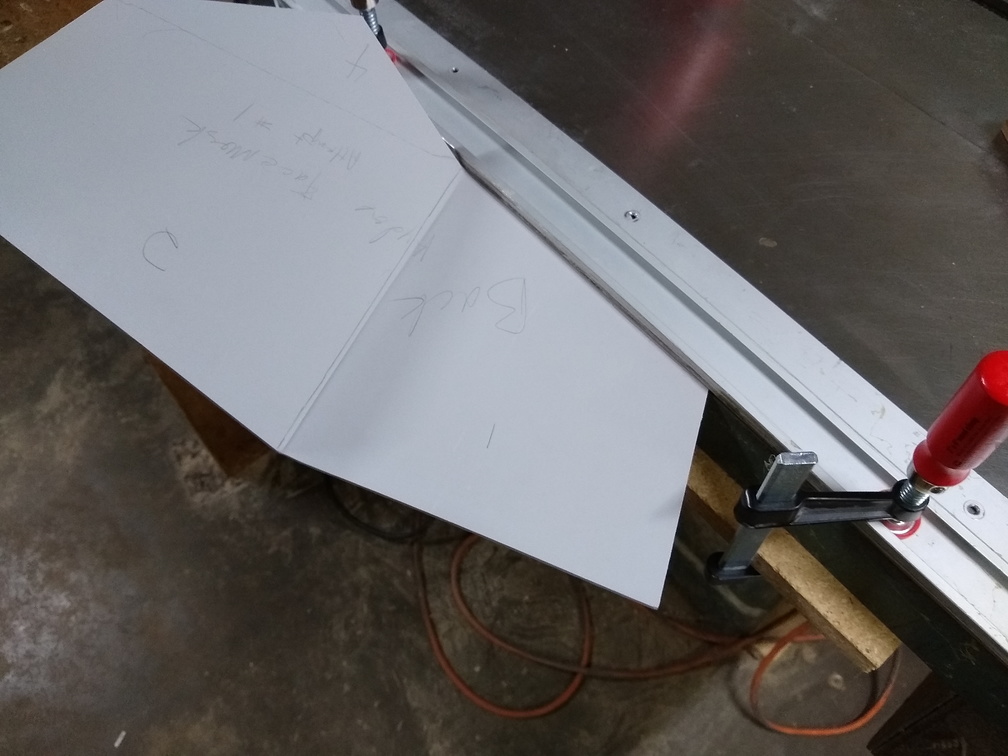
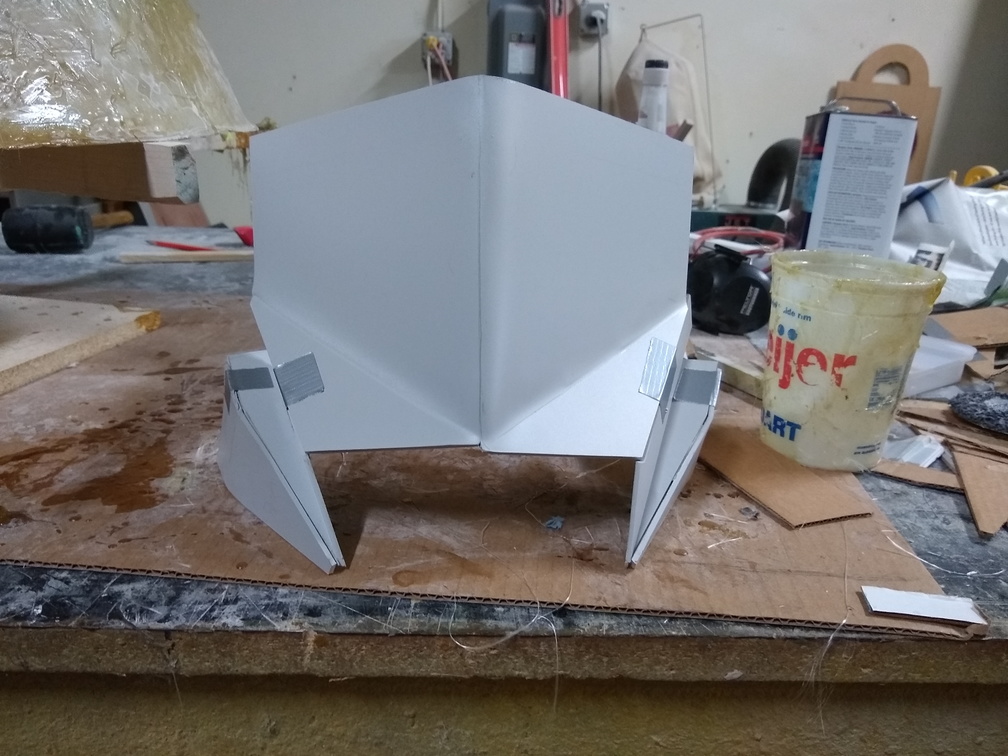
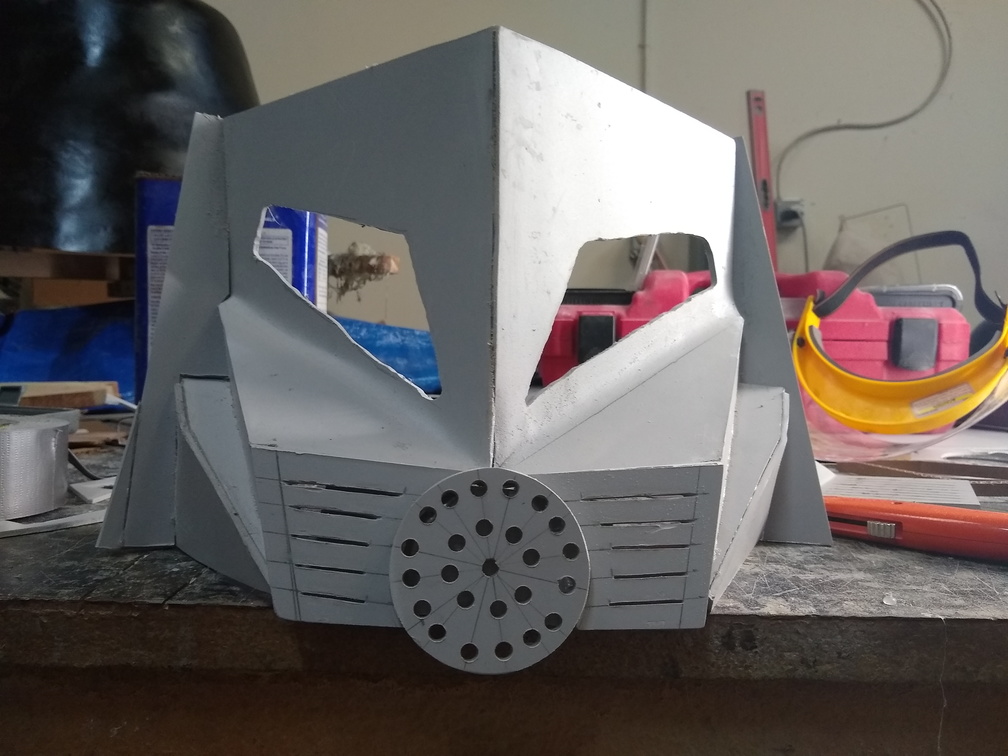
A little bit of Evercoat and some paint got me a mask that wasn’t anywhere near as awful as the original. Not that it was a very high bar to jump, let’s be honest.
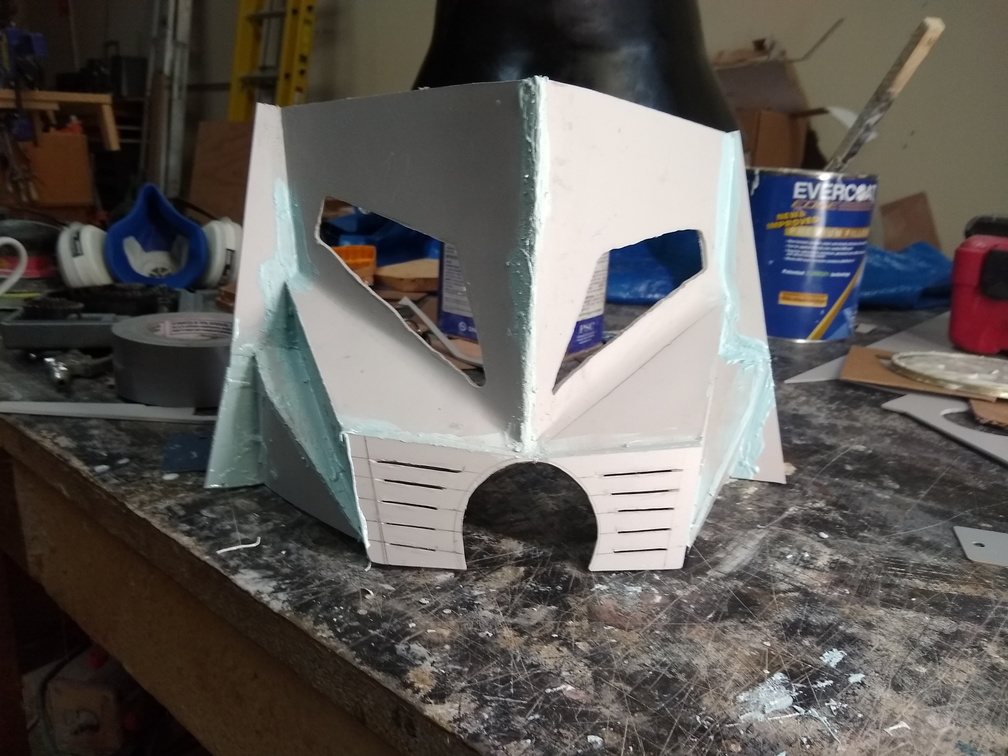
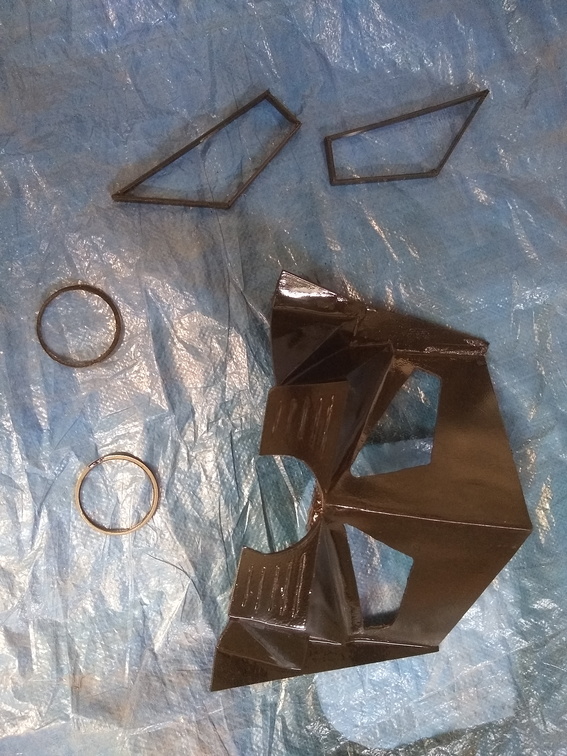
I used the head strap for an old welding helmet, but the mask still doesn’t want to clear the shell of the helmet. That’s something I still need to work on. Also, when it came to the visor bits, I tried using some clear plastic with tail light blackout spray to tint it. That doesn’t work. For the next attempt, I used a shaded face shield lens that came from Amazon and that worked perfectly.
The next problem that I had was trying to get the helmet to remain mounted on a human head. The first attempt at this was done at the RV in the campground the night and morning before the costume made its second trip to GenCon. Basically, I fiberglass-ed in the welding helmet head strap:
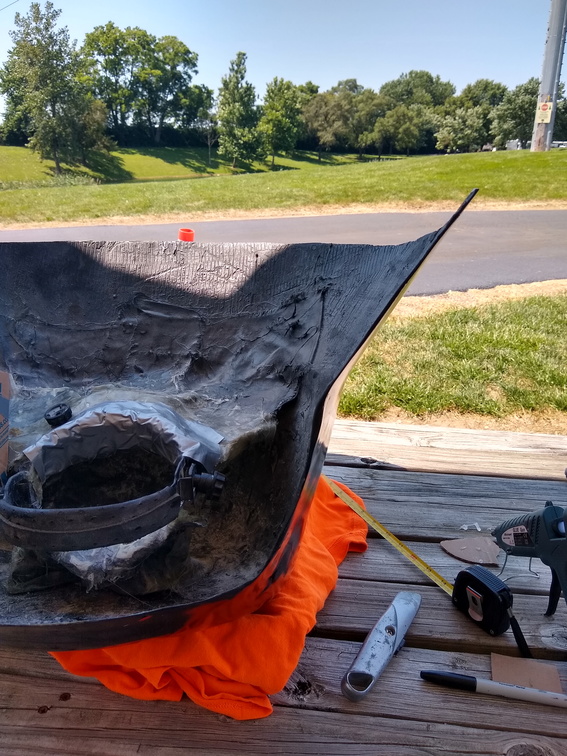
The problem is that the helmet’s weight was completely different now. The balance was way off and the whole thing wanted to roll backwards off the head, placing an inordinate amount of force against the forehead. The wearing experience could best be described as “hateful”. But it looked pretty good.

For DragonCon, my mission was to make the wearing experience a bit more tolerable. Taking inspiration from Colin Chapman, I decided to simplify and add lightness. Out with the massive amount of fiberglass that was holding the welding helmet head strap in place:
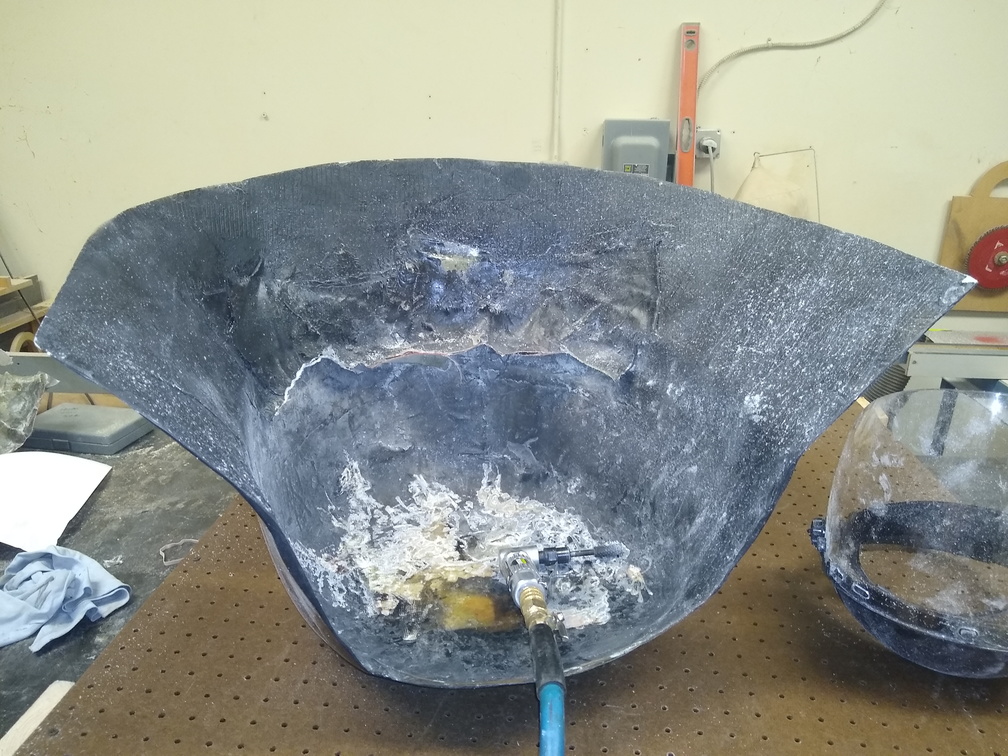
And I made a new inner hat out of plastic sheeting:
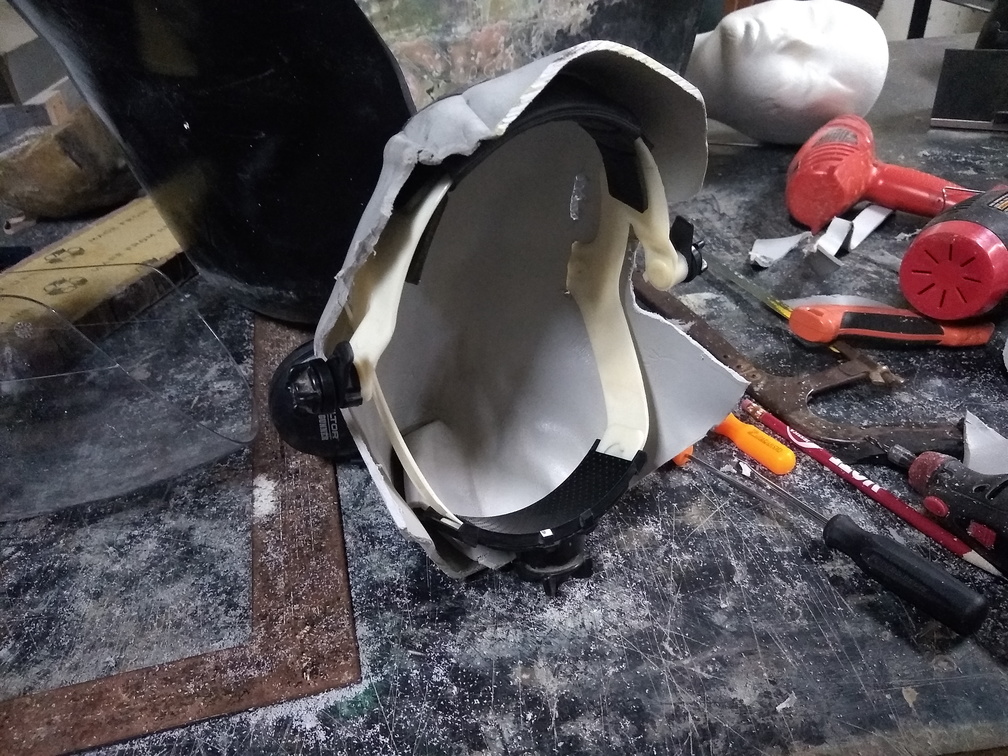
And using a little bit more of the plastic, I made a little bit of a post to offset the new inner hat from the shell of the helmet to keep it positioned correctly on the head.

Now there was an inner hat that was securely attached to the shell and that would also securely – but not painfully – attach to the head.
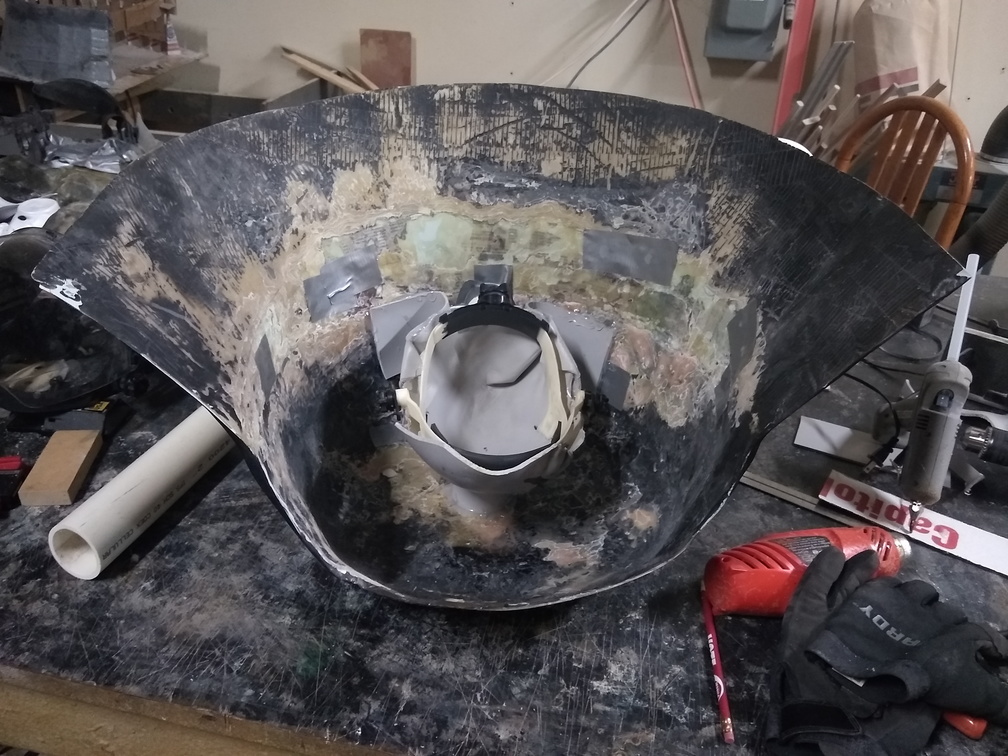
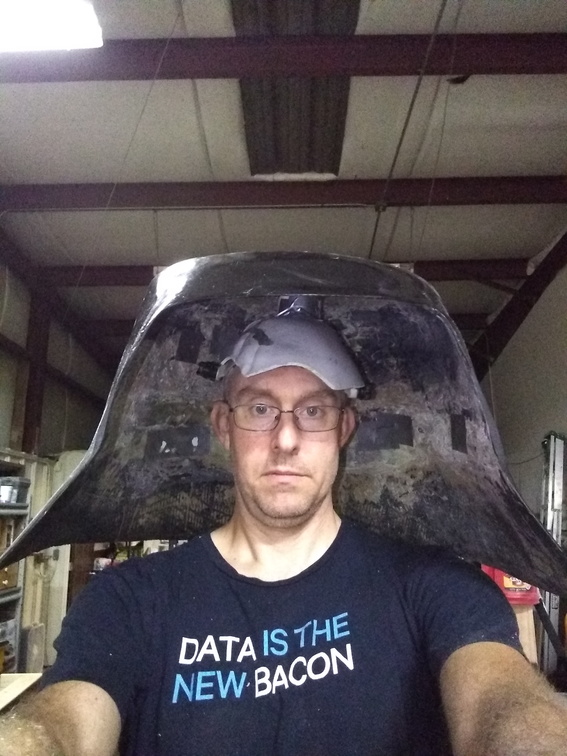
With the face mask re-mounted, the helmet is now lighter, the weight is more evenly distributed, and it is more firmly attached to the wearer’s head. The face mask is still not operational – that’s something that I still need to try to figure out – but version 2 is certainly a big improvement over the original.
